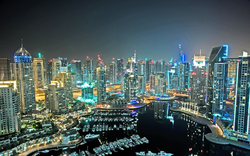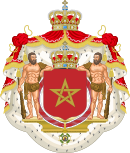| Economy of Andalus
|

Deira is the financial centre of Andalus
|
| Rank
|
4th (nominal) or 3rd (PPP)
|
| Currency
|
Colum (₡)
|
| Fiscal Year
|
Calendar year
|
| Trade Organizations
|
East Althenian Sphere
Columbian Union
|
| Statistics
|
| GDP
|
$4.878 trillion (nominal)
$5.096 trillion (PPP)
|
| GDP Growth
|
 8.7% (nominal; Q1 2016) 8.7% (nominal; Q1 2016)
 7.2% (real; Q1 2016) 7.2% (real; Q1 2016)
|
| GDP Per Capita
|
$58,825 (nominal)
$61,023 (PPP)
|
|
|
| GDP by sector
|
2011 statistics
- Services (72%)
- Industry (19%)
- Other (9%)
|
| Inflation
|
1.71% (2012)
|
| Pop. under poverty line
|
1.4% (2014 est.)
|
|
|
|
| Labor Force
|
60.6 million (2016 estimate)
|
| Labor Force by sector
|
2013 statistics
- Services (60.8%)
- Industry (32.1%)
- Other(7.1%)
|
| Unemployment
|
 4.8% (Q2 2014) 4.8% (Q2 2014)
|
| Main industries
|
Tourism, machinery, steel, chemicals, ship building and repair, construction, pharmaceuticals, aviation services, financial services
|
| Ease of Doing Business rank
|
26th (2013)
|
| External
|
| Exports
|
§1.84 Trillion
|
| Export goods
|
Engineering products, chemicals; food (wheat), aluminum; minerals and precious metals, oil products, plastics
|
| Main export partners
|
TBA
|
| Imports
|
§1.19 Trillion
|
| Import goods
|
Transport equipment, energy products, textiles and clothing; food, vehicles
|
| Main import partners
|
TBA
|
| Gross external debt
|
§108 Billion
|
| Public finances
|
|
|
|
| Revenues
|
$2.33 Trillion
|
| Expenses
|
$1.3 Trillion;
|
|
|
|
|
|
|
| Ratings
|
- Domestic: AAA+
- Foreign: AAA+
- T&C: AAA+
- Outlook: Stable
|
|
Andalus has the world's ??th largest nominal GDP, and ??th largest GDP by PPP. The country is a founding member of the OECD (1961) and the G-8 major economies (2003). Andalus maintained an average growth rate of 10% between 1984 and 2010, before faltering at the beginning of the Andalusian Financial Crisis.
The Andalusian economy largely benefited from the social-democratic reforms under President Faisal, establishing a hybrid combination of a free market economy with a welfare state. High exports during the later half of the 1990s allowed for the diversification of Andalus' economy from it's dependency on oil, which now contributes 6% of Andalus' GDP. With the election of the radical "La Gauche" party in the 2015 election, the Andalusian economy underwent a major shift to the far-left, with the beginning of policies aimed at dismantling capitalism, and gearing the economy towards benefit of the people, not multinational corporations.
Industry and manufacturing[edit | edit source]

